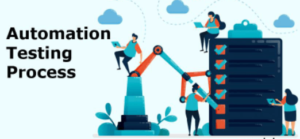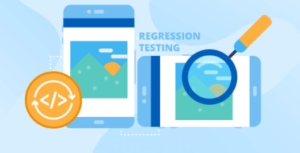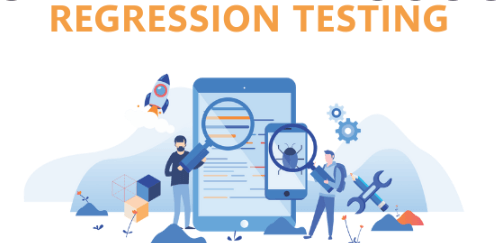Table of Contents
The regression test automation framework provides an environment for automation test scripts which allows the user to develop, execute and report the test scripts. These frameworks combine guidelines, coding standards, concepts, processes, practices, project hierarchies, modularity, and reporting mechanisms. They can be prepared from scratch or chosen from the ones available in the market.
This article will help you understand the frameworks needed for executing regression testing and checking the regression test selection tool.
Framework for the execution of regression testing
When choosing the framework for regression testing, it is essential to understand the type of testing framework to adopt. Below are the steps that help in deciding the execution of regression testing:
Selection of test cases for execution
The selection of test cases is a crucial step for the effectiveness of automated regression testing. Select the test cases based on the changes made in the application’s code and the areas they could impact.

Execution of selected test cases
The easy execution of test cases is the fundamental requirement for automated regression testing. Execute the test cases independently. This ensures the test cases don’t fail to run due to failure in other test cases. When performing the selected automated test cases, assess the reusability of test modules and maintain a high frequency of testing.
Execution of test report analysis
The regression QA specialists need to explain the outcome of executed tests to the stakeholders, so a test report analysis is mandatory. The report analysis is where all the essential information is provided for the test execution status. So once the test completes, send the report analysis to the team.
When writing a detailed test report analysis, developers need to develop the analysis metrics, the scope of testing, and explain how the testing session helped the team achieve specific goals during the planning stage. With this report analysis, project managers can analyze the test execution results and the status of the next deployment.
Archive of test results
There should be a place to aggregate the result of test report analysis to understand the default areas that need particular focus so testers can rework them.
Management of test cycle
Test suites are the collection of test cases grouped for test execution. This step needs constant changes and modifications. Testers need to add new test cases following recent changes in the application and remove redundant test cases.

Framework for checking regression test selection tools
RTS or Regression test selection computes dependencies and affected tests using analysis. Based on the requirements, there are various test automation frameworks you can evaluate:
Module Level Testing:
This testing framework divides the application under test into isolated modules. Each module receives a test script and creates a large-scale test. An abstraction layer separates these scripts so that changes in a specific module do not affect the entire module.
With this framework, organizations can build a high-level modularization leading to more accessible and cheaper maintenance. However, this framework has a drawback—the test data is embedded into test scripts.
Library Architecture Testing:
This framework is an extension of module-based testing. In the library architecture framework, the application is divided into functions that other application parts can use. A ‘common library’ is created, including standard procedures for the application under test.
These libraries can be used whenever required. Like, the module-based testing framework builds a high level of modularization, easier maintenance, and lower costs. Furthermore, the library approach used in this framework makes reusability easy.
Data-Driven Testing:
This framework divides the data and test scripts, storing them in an external base like XML, Excel, Text, and CSV. This type of data is stored in key points. Use the key to access data within the test scripts. One advantage this framework provides—it reduces the number of scripts required to cover test scenarios which means your team will need less time to code to complete a set of procedures.
Any changes to the test data matrix won’t affect the test script code. This makes data-driven testing flexible and reliable. However, the process of creating test data sources and reading mechanisms makes the framework complex. This framework requires a skilled understanding of implementing coding languages because of the development of test scripts.
Also Read This: Manual vs Automated Software Testing
Keyword-Driven Testing:
This framework is an extension of data-driven testing. It divides test data from scripts and keeps the test script code in an external data file. This code is called a keyword, and these keywords are self-guiding. All the keywords are created and placed in the base code in this framework.
It is important to note that the keywords and test data are independent of the specific tool used. This framework provides precisely the same advantages as the data-driven framework. But, data-driven testing requires the developers and testers to have extensive coding language expertise, whereas keyword-driven testing does not demand a coding requirement which makes it more convenient.
The reason this framework does not require extensive coding? Implementation of a single keyword across more than one script. However, team members need to be comfortable with keyword creation methods. One thing to consider is that this framework will become complex as the number of keywords grows.
Hybrid Testing:
Hybrid testing framework is the combination of different frameworks. It covers the benefits of all the frameworks in a single testing framework.
Behavior-Based Development:
In a behavior-based development, the tester provides inputs from a row in the table and expects the output from the same row. Moreover, it does not require the user to understand programming languages.
The end goal of a regression testing framework is achieving the test framework with minimum effort, time and cost. Keeping this in mind, know that the regression testing framework should:
- Have an easy-to-understand structure for regression test cases and test suites.
- Update the test cases regularly.
- Grade the regression test cases according to priority such that execution can be planned based on the given time for regression testing.
- Structure the report before forwarding the regression testing results to the stakeholders.
- Store the regression testing reports in one place. They should be accessible for comparison and charting results against the execution time, which helps determine weak areas in the code for improvement.
Also Read This: Decentralized App Development Frameworks
Conclusion
When determining the automation regression testing framework, developers and testers need to take into consideration questions to help them create a concrete structure:
- How is the application built?
- Does the application have a complex workflow?
- What costs are associated with the chosen framework?
- Does the team have the expertise for executing these frameworks?
Answer these questions and evaluate multiple tools. By doing so, you can assess various parameters such as scripting, integration, usage, and reports generation, which will help identify the rights tools.











